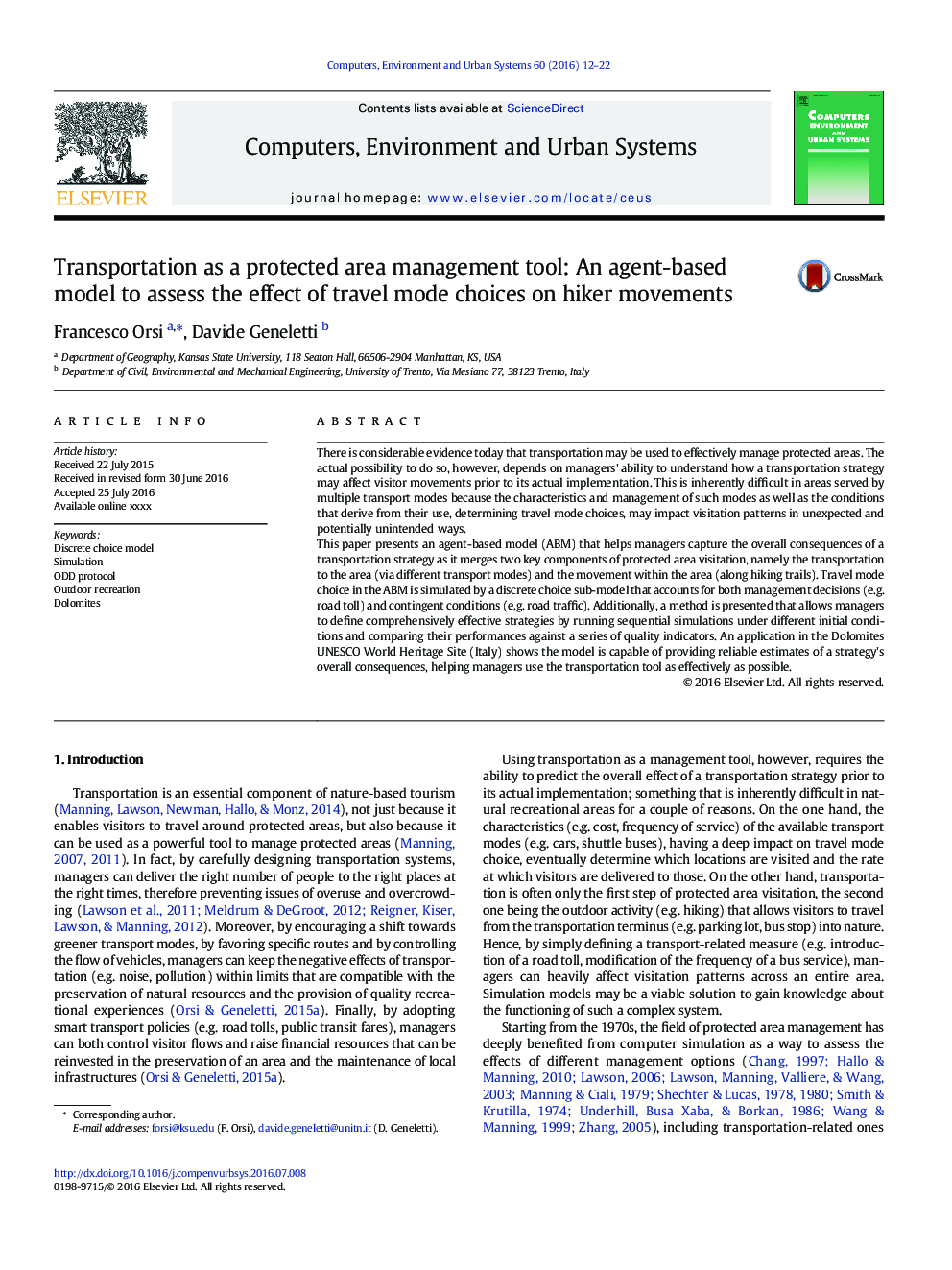| کد مقاله | کد نشریه | سال انتشار | مقاله انگلیسی | نسخه تمام متن |
|---|---|---|---|---|
| 506245 | 864880 | 2016 | 11 صفحه PDF | دانلود رایگان |
• Transportation characteristics and operation heavily affect visitation patterns.
• Agent-based model can simulate the interactions that determine travel mode choice.
• Through transportation-related actions, managers can vary crowding levels on trails.
• Effective strategies can be designed using environmental and socioeconomic indicators.
There is considerable evidence today that transportation may be used to effectively manage protected areas. The actual possibility to do so, however, depends on managers' ability to understand how a transportation strategy may affect visitor movements prior to its actual implementation. This is inherently difficult in areas served by multiple transport modes because the characteristics and management of such modes as well as the conditions that derive from their use, determining travel mode choices, may impact visitation patterns in unexpected and potentially unintended ways.This paper presents an agent-based model (ABM) that helps managers capture the overall consequences of a transportation strategy as it merges two key components of protected area visitation, namely the transportation to the area (via different transport modes) and the movement within the area (along hiking trails). Travel mode choice in the ABM is simulated by a discrete choice sub-model that accounts for both management decisions (e.g. road toll) and contingent conditions (e.g. road traffic). Additionally, a method is presented that allows managers to define comprehensively effective strategies by running sequential simulations under different initial conditions and comparing their performances against a series of quality indicators. An application in the Dolomites UNESCO World Heritage Site (Italy) shows the model is capable of providing reliable estimates of a strategy's overall consequences, helping managers use the transportation tool as effectively as possible.
Journal: Computers, Environment and Urban Systems - Volume 60, November 2016, Pages 12–22
